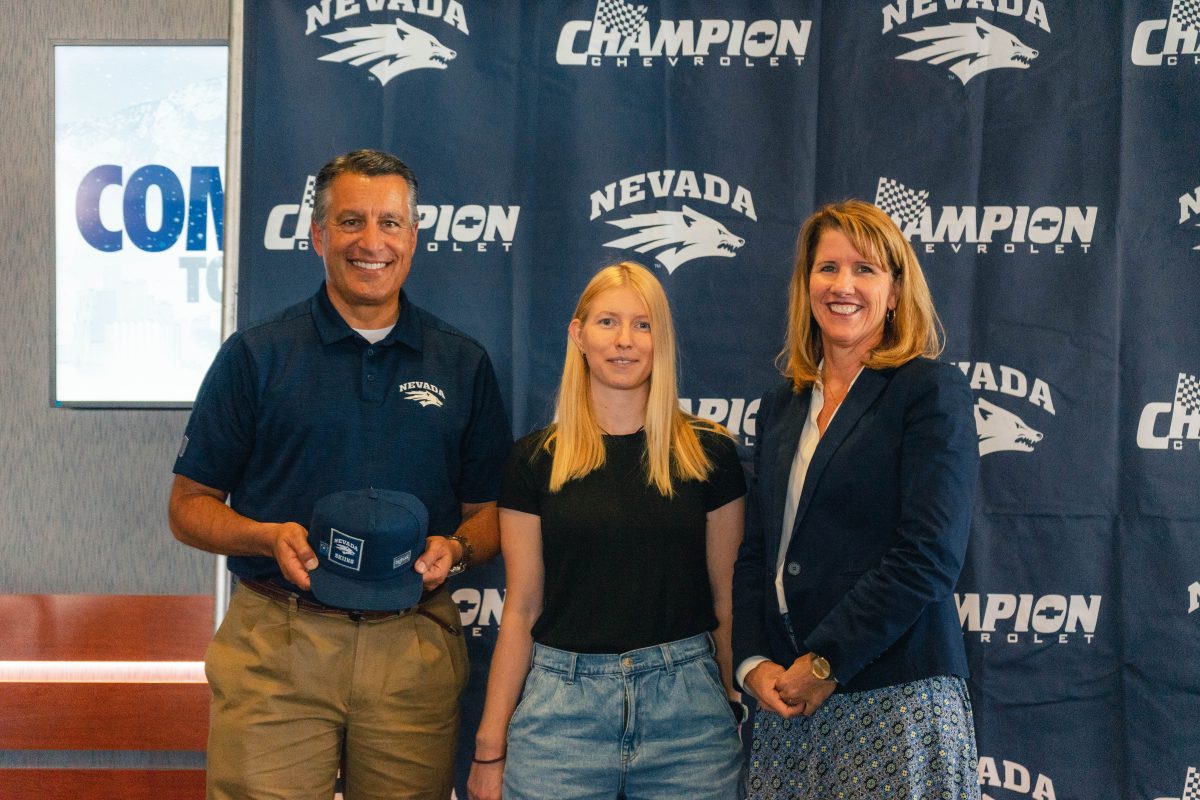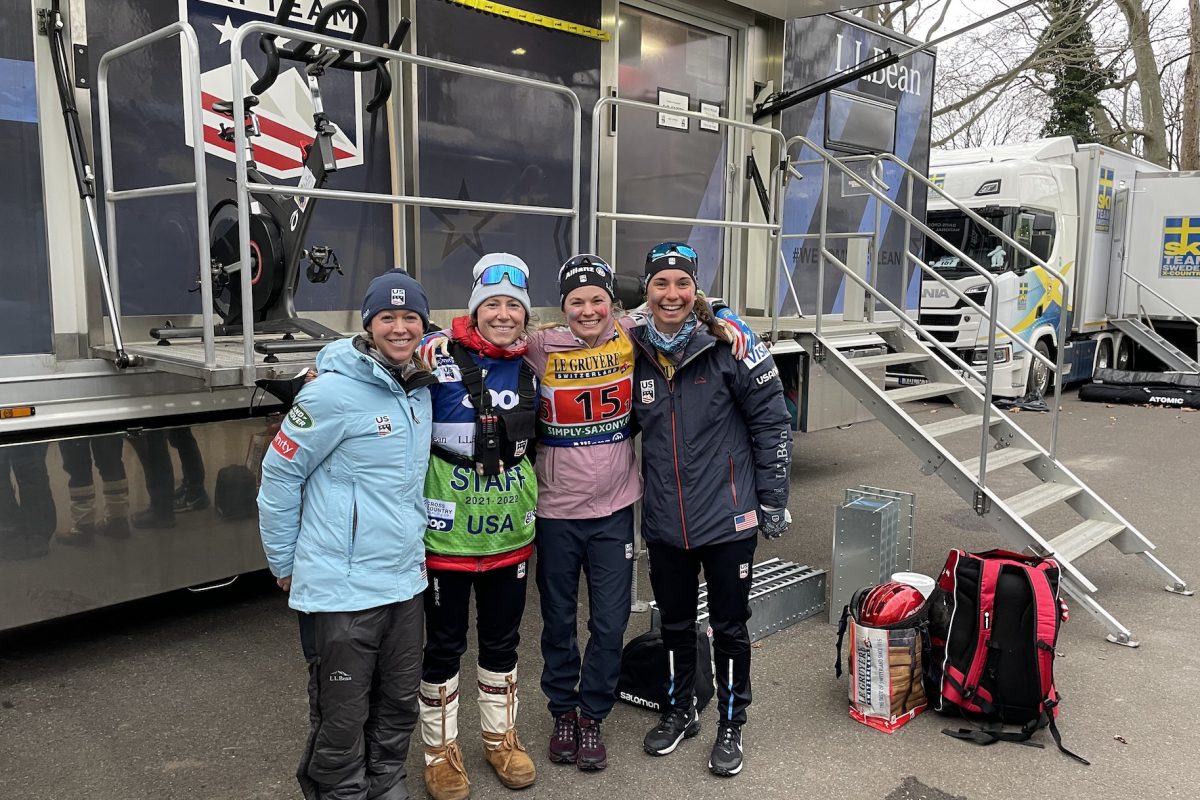
Eileen Carey is a busy lady. In 2010, while working as the Vice President for the Maine Winter Sports Center, she oversaw three huge events in Aroostock County: Junior Olympics, biathlon national championships, and spring series. Since then she’s switched jobs, and is now overseeing adaptive skiing for the New England Nordic Ski Association.
Along with all of her other responsibilities, Carey is a member of the Ladies’ Cross-Country Subcommittee for the International Ski Federation (FIS) – in fact, in 2010 she became its chair. That means that she travels to the annual FIS meetings, which were held this year in Portoroz, Slovenia. (FasterSkier already caught up with John Farra and Kikkan Randall to get their impressions of the meetings.)
The subcommittee has a long history; it grew out of the Women’s Skiing Committee, founded at the 1946 conference in Pau, France. That forum was focused mainly on alpine skiing, which made sense since women’s alpine skiing actually existed. Women’s nordic skiing wasn’t added to the Olympic program until 1952; in Oslo, there was only one competition, a 10 k , compared to three for the men.
In 1965, the committee was divided into two subcommittees, one for alpine and one for cross country, the latter of which was headed by Inga Lowdin. The Swede kept her post for an amazing 25 years, even as the subcommittee itself changed in both name and focus. Lowdin spoke seven languages, which enabled the subcommittee to develop into a truly international endeavor. She also kept ski racing until she was 81 year old.
The Ladies’ Cross-Country Subcommittee takes up any issue pertaining to women’s skiing, whether it be the number of women competing around the world, how to foster an atmosphere where there are more female coaches, or technical issues related to women’s racing. The head of the subcommittee also gets a chance to sit on the Cross-Country Committee, which addresses even bigger issue for the sport as a whole.
Carey – who in typical fashion was busy working 14-hour days at a summer program – recently made enough time to answer some questions about the women’s subcommittee and her experience at the international meetings.
FasterSkier: On your first trip to the FIS conference, what were your impressions of it?
Eileen Carey: I was a bit intimidated going into my first meeting-it’s not every day that I my morning consists of eating breakfast, followed by hanging out with Stephania Belmondo! My goal was to take it all in and learn as much as possible about the goals and process of the committee so I could be effective in the future. I was surprised at how much I ended up participating in that first meeting. I realized that the strength in that group rests in diversity-women from all around the world who have been involved many different aspects and levels of the sport. I brought a perspective to the table that was much different than an Olympic champion, but I hope just as valuable to the conversation.
FS: When and how did you become the chair of that subcommittee?
EC: Over the first couple years of my involvement, I ended up taking a leadership role in many of the discussions and projects we were working on. I think a huge challenge for an international organization is the language barrier. Business is all conducted in English and there are varying levels of mastery of the language. Those who speak English well end up having more confidence to speak and are able to communicate ideas and opinions more effectively. Honestly, I think this was a big part of me becoming a leader of that group. When the previous Chair (Midori Poppe) retired from her post last fall, she asked if I was interested in taking her position. I moved into the role after the Fall 2010 meetings.
FS: What added responsibilities do you have as the chair?
EC: I collaborate with members to come up with our agenda and initiatives and work with FIS to accomplish those goals as appropriate. As a chair, I also sit on the Cross-Country Committee.
FS: What are some of the issues the subcommittee talked about this year? The focus of the subcommittee seems to be development for women skiers; what is FIS trying to do on that front?
EC: From my perspective, the main goal of the committee is to bring women to the table. Most FIS committees have few or no women, but members of the women’s committee also have a seat and voice in other meetings. From my perspective, this is where the relevancy of this committee lies. If FIS expects to be a leader in world-wide sports, and have girls and women participate in all levels and aspects of the sport-from being spectators and consumers to competitors, TDs and coaches- that needs to be reflected in leadership. If you want girls to start skiing, they have to have role models; if you want to market the sport to women, you have to have women who are helping to drive that discussion; and if you want the sport to function as well as possible on a worldwide stage down to a local level, women need to be an integral part of that process. Right now, FIS leadership is pretty antiquated in that regard, so I think the most significant contribution the women’s committee can make lies in changing the face of the leadership.
FS: You interact with a lot of people from different countries – does it seem like the U.S. is ahead of the curve on having women participate, behind the curve, or sort of average?
EC: I think the U.S. is ahead of the curve in many respects. There are a lot of great programs and events in this country that are unique and are driving the development of female skiers and that are going to have a positive impact on all levels of the sport in future years. On the other hand, the sheer numbers of female skiers in some regions of the world and the accessibility of skiing in the media are certainly things that we can continue to look toward and strive for as a skiing nation.
FS: What’s it like to rub shoulders with some really amazing skiers – for example Stefania Belmondo is on your subcommittee?
EC: It is a really interesting part of those meetings, I think. There are people with so many different experiences of the sport and it is a great opportunity to learn from and build off each other. Stephania and I had a great conversation this spring about how to use elite athletes to promote youth development. She was interested in my experiences of doing this at Maine Winter Sports Center and NENSA and I learned a lot from her about an annual youth event she is a part of in Italy. She has such a different lens on the sport and one that makes collaboration really valuable. But, yes, I was star struck when I first met her, if that was what you were really trying to get at!
FS: Do you ever end up explaining how things are in the U.S. to other people?
EC: I think one of the biggest differences between the U.S. and many of the countries that are represented at FIS is the source of athlete funding. That hundreds of athletes are supported through the collegiate system allows for many more skiers develop into their 20’s than a country that supports skiers through government funding for example. In addition, the fact that the U.S. has hundreds of full-time athletes supported by clubs at some level or another is a unique concept to many of the people I talk to at FIS meetings. I think this system thrives in many respects because the programs that support these athletes prioritize promoting and utilizing their skiers as catalysts of youth development. We many not have the luxury of the ever-presence of skiers in mainstream media, but perhaps this has forced us to be more innovative with athlete development. I think continuing to tweak and develop this system to success will be our greatest challenge but also has the potential to be our greatest asset.
FS: Is there anything in particular that you’ve come across at the conference that made you think, wow, I wish it were like THAT in the U.S.?
EC: There are so many things: skiing as a national pastime, having the support and interest of mainstream media, larger sponsorship opportunities for athletes, the list goes on! But ultimately the successful development of the sport is in incorporating the elements that are both successful in other places and realistic for us, as well as capitalizing on what we have that is unique. On that front, I think there is a lot we can be proud of as a country and much that we can continue to work on and improve.




One comment
Lauren Jacobs
August 15, 2011 at 6:52 am
Wonderful interview. Thanks for sharing Eileen’s story – I’m sure many had no idea about her role with FIS. Good luck with all your projects Eileen!